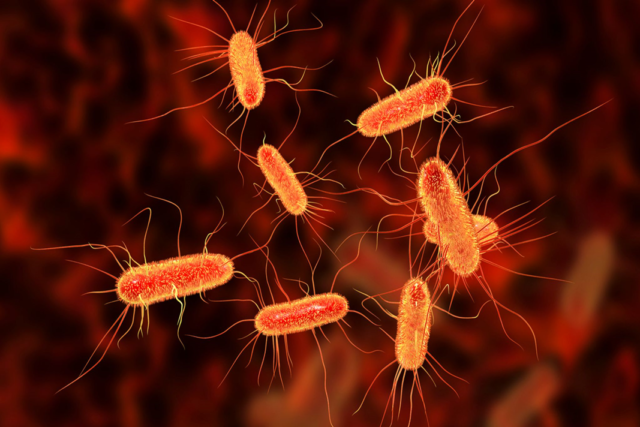Food Items Responsible The UK is currently experiencing an E. coli outbreak and investigations are currently under way to trace its source. With public health at stake and consumer safety at stake, quickly identifying which food item has caused contamination is key in order to preventing future cases and protecting consumer safety. But what exactly is E. coli, and how does it get into our food products? Let’s dive deeper into this subject matter.
What is E. coli?
E. coli (short for Escherichia coli) is a species of bacteria commonly found in both humans and animals’ intestinal tracts, usually without adverse consequences. Most strains are harmless; others play an essential role in maintaining gut health; yet other strains have the potential to cause illnesses ranging from mild to severe, such as food poisoning, urinary tract infections or even life-threatening kidney failure.
How E. coli Spreads:
1. Contaminated Food
E. coli bacteria can spread via food that has become contaminated with it, especially ground beef that has not been thoroughly cooked and contains trace amounts of E. coli. Raw vegetables and unpasteurized dairy products could also become sources of contamination if exposed to contaminated surfaces or water sources.
2. Contaminated Water
Consuming or swimming in water contaminated with E. coli bacteria can put people at risk, especially in areas with poor sanitation where bacteria from human waste may enter the water supply and cause infection. This problem is most prevalent where sanitation levels are lacking and where bacteria from waste materials enters into the supply.
3. Person-to-Person Contact
E. coli bacteria can easily spread between people if proper hygiene practices aren’t observed, particularly after using the toilet. Therefore, it’s essential that individuals thoroughly wash their hands with soap and water after using the restroom so as to stop further spread of this dangerous pathogen.
4. Contact with Animals
Animals such as cows, goats and sheep may carry E. coli bacteria in their digestive systems and direct contact with these animals can result in infection; such as petting zoos or farms can provide opportunities for direct infection transmission.
E. coli Prevention Tips:
- Cook meat, particularly ground beef, to a safe internal temperature.
- Wash hands thoroughly, especially after using the bathroom, changing diapers, or handling animals.
- Rinse fruits and vegetables under running water before eating or cooking them.
- Avoid drinking unpasteurized milk, juice, or cider.
- Drink water from safe, treated sources.
By following these practices, the risk of E. coli infection can be significantly reduced.
Historical Context of E. coli Outbreaks
Previous E. coli Outbreaks in the UK
The UK has experienced several E. coli outbreaks over time, each one underscoring our food systems’ vulnerability. For instance, one 1996 Lanarkshire outbreak linked to contaminated meat resulted in 21 deaths – serving as a stark reminder of E. coli’s dangerous potential.
Global E. coli Outbreaks and Their Impact
E. coli outbreaks have had devastating global impacts. Germany experienced one of the deadliest cases ever recorded when infected sprouts caused more than 50 deaths. Such events demonstrate the need for swift response and stringent food safety protocols.
Areas Most Affected
The outbreak has predominantly affected certain regions, with higher case numbers reported in major cities like London and Manchester. Rural areas have also witnessed isolated cases pointing towards widespread contamination sources.
The Role of Food Safety Regulations
Current Food Safety Standards in the UK
The UK boasts some of the strictest food safety regulations worldwide. These regulations establish guidelines on how food should be grown, processed, and stored to avoid contamination; yet even these systems can fail as evidenced by this outbreak.
Impact of Regulations on Preventing Outbreaks
Strong regulations play a vital role in mitigating outbreak risks. But as new challenges emerge – such as globalization of food supply chains – there is always the need to adapt and strengthen standards accordingly.
Case Studies
Notable E. coli Outbreaks Linked to Food Items
Analyzing past E. coli outbreaks can provide invaluable lessons. For instance, the 2006 outbreak in the US linked to spinach highlighted the necessity of monitoring agricultural water sources.
Lessons Learned from Past Incidents
Each outbreak teaches us something about food safety – be it improving traceability or raising awareness – which will enable us to prevent future incidents.
The Future of Food Safety in the UK
Innovations in Food Safety Technology
Advances in technology such as rapid DNA testing and blockchain for supply chain transparency are creating better food safety practices, making it easier to detect and respond swiftly to potential contamination threats.
Future Challenges and Opportunities
As the food industry evolves, new challenges will emerge. Globalization, climate change and shifting consumer habits all pose risks and opportunities to food safety; staying abreast of these trends will be essential in maintaining food safety standards.






































